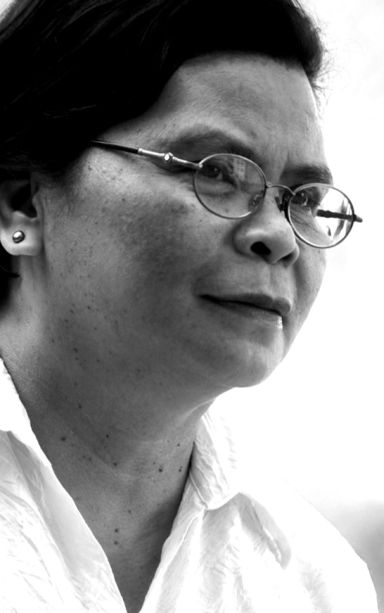
DELACERNA
Book launchings are interesting events and used to be rare. This time of the year, there had been three very interesting book launchings: “Kamingaw: An Impressionist Portrait of the Bisaya Painter Martino A. Abellana” by Raymund L. Fernandez on January 10, 2017 at the Cebu Country Club; “Shooting Stars and Dancing Fish: A Walk to the World We Want” by Tony Oposa on March 17, 2017 at Casino Español; and “Poblacion Houses in Cebu: Urban Architecture in the American Colonial Period” by Kiyoko Yamaguchi on April 7, 2017 at Casa Gorordo Museum.
What’s so interesting about these book launchings are the subject, the manner of presentation and the authors themselves. We got to interact with the authors themselves, and each book contains sketches and paintings by the authors themselves.
“Kamingaw,” published by the University of San Carlos Press, presents, like an Impressionist painting, a painting of the man, Martino Alcoseba Abellana — what he was like, what he did, what he believed in, what he did and who he was. The book is written from the unique perspective of a student viewing his teacher and his teacher’s art. It serves as an invitation for others, including specialists of history and art studies, to present their own perspectives on this truly remarkable painter, teacher and important man, who lived inside the continuing history of his Bisaya and Filipino culture.
The author, Raymund L. Fernandez, handles courses in techniques, art history and theory both in the Studio Arts and Product Design Program at the University of the Philippines Cebu. He also engages in writing and has a regular column at the Cebu Daily News.
“Shooting Stars and Dancing Fish” published by the Ramon Aboitiz Foundation Inc. is a book on environmental issues and concerns presented in storybook form. Concepts like creative justice and the law of life are simple but brilliant examples of how we must learn to interact with the world around us. The book demonstrates how we can and we should “paint our future” that is why it is called a storybook for the future.
It is a textbook meant not just for lawyers, policymakers or scientists. It instills concepts like law, diplomacy and observation to show where we need to go and how we can get there.
The author, lawyer and environmentalist Tony Oposa, shares his gift of storytelling and his interest in painting in “the walk to the world we want.”
“Poblacion Houses in Cebu,” published by the University of San Carlos Press, examines the process of urban transformation at the turn of the twentieth century in the Philippines, focusing in particular on Cebu.
Based on the author’s doctoral dissertation, the book looks at the changes in urban plans and buildings designed and built before and after the administrative transition from Spanish to American colonial rule.
With this, it explores the implications brought about by these changes and the role that architecture played.
Both Spaniards and Americans stamped their marks on Philippine urban architecture mainly in the public domain.
The Spaniards had the poblacion with its central plaza, church, convent and so on.
They preferred stone because it meant a permanent structure symbolizing civilization and urbanity.
The Americans introduced new infrastructure such as roads, railways and ports.
They also built schools, together with hospitals, post offices, provincial government buildings, hotels, movie theaters and social clubs.
Their favorite construction material was reinforced concrete which could be mass-produced and was suited for building many different types of structures.
Kiyoko interestingly shows it was urban architecture in the private domain (i.e., houses) that saw the development of distinct Filipino architectural styles, thus the title of the book.
The Bahay na Bato (stone house) is a two-storey house with stone walls for the lower house and stilts supporting the upper level of wooden structure.
It has a second floor façade surrounded by sliding capiz windows.
The author Kiyoko Yamaguchi was born in 1976 in Shiga, Japan. She obtained her BA in Architecture from the University of California in Berkeley.
After a year of fieldwork in Cebu, she earned her PhD in Southeast Asian Studies degree at Kyoto University. She then taught at The Chinese
University of Hongkong for seven years before settling down in Kyoto as a watercolor artist in 2014. All the sketches and drawings of the houses in the book are done in watercolor and make for a more interesting reading.
Kiyoko chose Cebu because she appreciated the openness of Cebuanos to outsiders.
She observed that the preservation of old houses depends on the local economy: if the economy is bad, the old houses are preserved, if the economy is good they are not preserved. She further shared that the construction of the poblacion houses was more localized — the local people built the houses.
All these book launchings are invitations to write more about our cultural heritage.
Disclaimer: The comments uploaded on this site do not necessarily represent or reflect the views of management and owner of Cebudailynews. We reserve the right to exclude comments that we deem to be inconsistent with our editorial standards.
